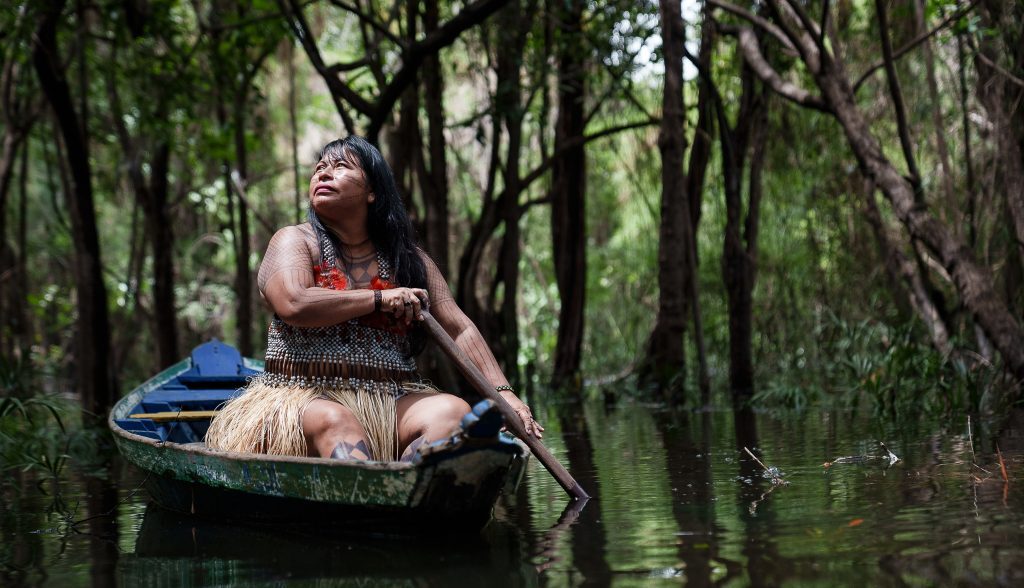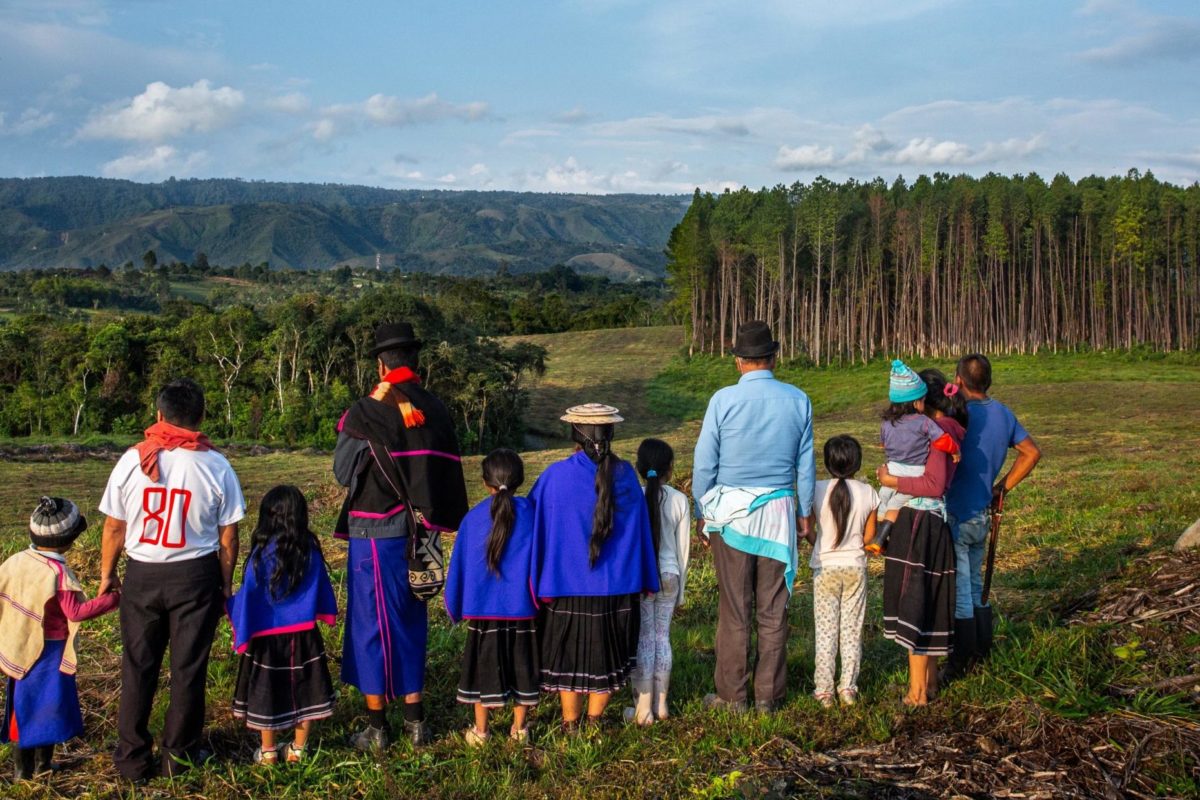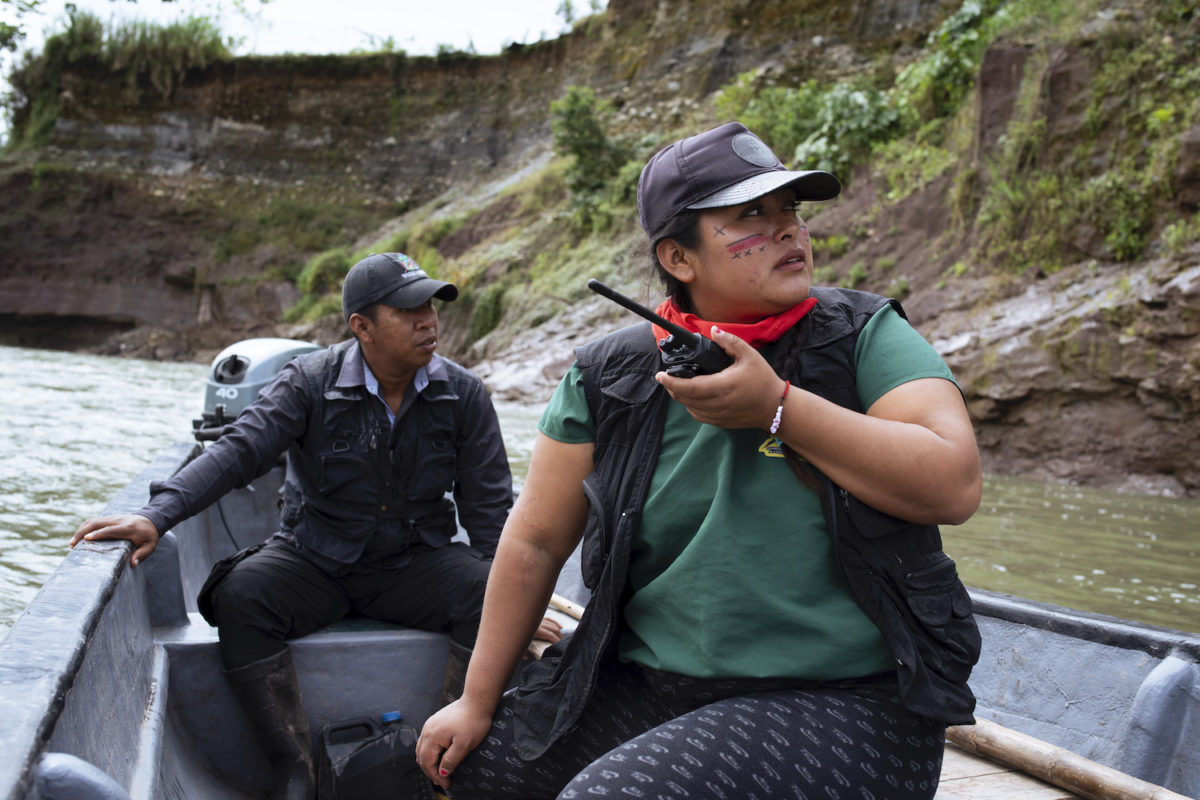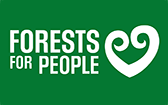Though communities like theirs have the potential to transform global rainforest conservation and climate efforts by delivering proven, scalable, community-based solutions, Indigenous communities require direct funding, argues a recent commentary.
At Forests for People, we stand in solidarity with Indigenous communities striving to protect our planet's rainforests. In line with our commitment to supporting sustainable livelihoods and biodiversity conservation, we are pleased to present this insightful commentary on the critical importance of direct funding for Indigenous peoples in preserving global rainforests and mitigating climate change.
Authored by esteemed leaders, this commentary underscores the urgent need to empower Indigenous communities as frontline defenders of our environment.

by Joe Eisen, Suzanne Pelletier, Tørris Jæger on 24 January 2024
- Indigenous leaders attended the World Economic Forum’s 2024 Annual Meeting in Davos last week.
- Though communities like theirs have the potential to transform global rainforest conservation and climate efforts by delivering proven, scalable, community-based solutions, they require direct funding.
- Governments and donors must increase their direct, flexible, and less bureaucratic grant-making to those who have the profound knowledge and the means to make a real difference in preserving our planet’s future – Indigenous peoples, a new op-ed by Rainforest Foundation argues.
- This article is a commentary. The views expressed are those of the authors, not necessarily Mongabay.
Last week, Indigenous leaders from around the world joined business leaders and politicians for the World Economic Forum’s 2024 Annual Meeting in Davos, Switzerland. While much of the discussion on climate change and nature loss at Davos focused on the role of unproven and controversial voluntary carbon and biodiversity offset schemes, it is increasingly evident that it is Indigenous peoples who hold the key.
Indigenous peoples are on the front lines of the climate crisis, and it is their voices and solutions that must be championed and supported. These communities, often overlooked in the broader conservation discourse, hold a proven track record of delivering scalable, community-based solutions for the protection of rainforests. The science is clear: Indigenous-managed forests sequester more carbon and are better protected than those that aren’t, yet the international community consistently fails to include Indigenous peoples in the funding and policy discussions that significantly impact them.
The global elite who gathered at Davos need to go beyond just recognizing the crucial role of Indigenous peoples in confronting the climate crisis – and those most impacted by it – by supporting proven and scalable strategies and true engagement of Indigenous communities in securing rights to their land, promoting sustainable forest management, and developing sustainable local economies.


Misak women, men and children observe the contrast between the monoculture pine and eucalyptus plantation, on the right, and the natural forest in their territory, on the left. Image courtesy of Antonio Cascio.
One of the hurdles that has consistently inhibited progress is the chasm between promised funds and actual financial delivery to Indigenous peoples and other frontline communities. Despite the vast territories they manage – notably, over a third of the world’s intact forests, including half of the Amazon – Indigenous communities receive a shockingly small portion of international climate financing.
A report by our organization highlights the disparities: of the total climate aid provided by international donors between 2011 and 2020, less than 1% of these funds were directed to support Indigenous peoples’ forest conservation. And of these funds, only a fraction actually trickles down to Indigenous organizations and communities. Obstacles include excessive donor requirements for receiving and managing funding, and limited capacity in Indigenous organizations to meet these requirements (while the capacity to conserve forests is great). And great geographic, cultural, and linguistic distances between donors and Indigenous communities also increase these barriers.
Another significant step is supporting Indigenous peoples to secure their land rights. Land titles have proven to be the most effective (and just) way to protect Indigenous peoples’ lands from deforestation, with titled land experiencing a 66% decrease in deforestation. Legal land ownership ensures that Indigenous and other communities can defend their lands from invasion and hold illegal loggers and harmful industries accountable.


Alexandra Narváez and Holger Quenamá of the Sinangoe Indigenous Guard travel the Aguarico River. Image courtesy of the Goldman Environmental Prize.
Yet despite community-owned and claimed lands holding a majority of the world’s biodiversity (with some reports indicating this number is as high as 80 percent), Indigenous peoples hold legal rights to only 10% of it. Closing this gap is one of the most important steps Indigenous peoples need in order to protect forests. Thousands of communities, from the Congo Basin to Indonesia to the Amazon, are already harnessing technologies to map their lands, a crucial first step to legal recognition, but many more need support.
Further, equipping Indigenous communities with training and tools as simple as smartphone apps has led to notable outcomes in forest protection. Their communities can detect and report deforestation through on-the-ground monitoring tools or satellite imagery throughout vast, hard-to-reach territories. This is another scalable and highly effective way to protect rainforests like the Amazon. In fact, a two-year, peer-reviewed study published in the Proceedings of the National Academy of Sciences (PNAS) found that communities supplied with satellite data via smartphones saw 52% less forest loss than similar communities that did not adopt the technology, in the first year alone.
Innovative programs like Rainforest Alert have been impactful, allowing communities to leverage technology in their fight against deforestation. The program stands out as a community-driven rainforest monitoring initiative that empowers Indigenous peoples by providing them with remote sensing technology, allowing them to effectively monitor their territories against illegal deforestation. Indigenous patrols utilize satellite imagery and on-the-ground investigation to confirm findings, ensuring their community leaders have the vital information necessary to respond proactively.
Indonesia—home to the world’s third largest rainforest—is teeming with biological diversity. There, rights-based rainforest protection plays a crucial role in poverty reduction by enabling sustainable economic development of forest communities. These communities fully rely on sustainable harvesting of natural resources from intact rainforest ecosystems. A typical example of this is the megadiverse region of West Papua, an area where a number of palm oil concessions were recently revoked. The Eastern Indonesia Forest Facility (EIFF), a partnership between Indonesia-based NGOs EcoNusa and Bentara has demonstrably prevented deforestation, working at the district and village level to support Indigenous communities in managing their natural resources and improving livelihoods, while at the same time promoting their youths’ and women’s leadership.
Indigenous peoples are undeniably our strongest allies against the looming climate threat, often proving more effective at forest protection than national parks. They are pivotal in biodiversity conservation, advocating for land rights, and countering external dangers such as illegal logging and mining. Projects focusing on community mapping, land titling, legal support, and bolstering local governance are cost-effective, short-term solutions with long-term impacts. And Indigenous peoples are essential to all of this.


Indigenous leader Alessandra Korap Munduruku confronted Anglo American over its attempts to mine on protected Indigenous land, leading the mining giant to withdraw its prospecting applications. Image courtesy of the Goldman Environmental Prize
It’s vital to enhance the operational capacities of Indigenous communities and organizations by supporting programs their communities have identified as necessary to strengthen their participation in fund allocation and deliver impactful results. It’s critical that governments and global society ensure these climate endeavors respect their rights and adhere firmly to the principles of Free, Prior, and Informed Consent.
The world’s rainforests require more than just protection, they need management strategies that empower those who live in them. It’s essential to back these initiatives that tackle the primary sources of environmental degradation and recognize and amplify Indigenous peoples’ voices, understand their specific needs, and ensure they actively shape actionable and scalable solutions.
Valuing their wisdom and skills is not just respectful and necessary – it’s a pragmatic climate and nature strategy, in which a growing number of donors are investing. As we approach a critical turning point in the fight to stop deforestation, governments and donors must engage Indigenous peoples as true agents of transformation. They must increase their direct, flexible, and less bureaucratic grant-making to those who have the profound knowledge and the means to make a real difference in preserving our planet’s future – Indigenous peoples.
Suzanne Pelletier is Executive Director of Rainforest Foundation US, Joe Eisen is Executive Director of Rainforest Foundation UK and Tørris Jæger is Executive Director of Rainforest Foundation Norway.
"Direct funding of Indigenous peoples can protect global rainforests & the climate" by Joe Eisen is licensed under CC BY-NC-ND 4.0
